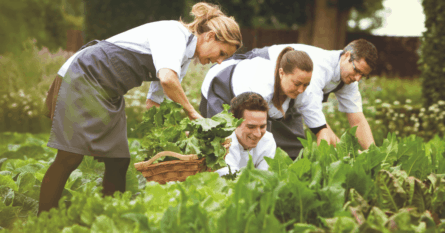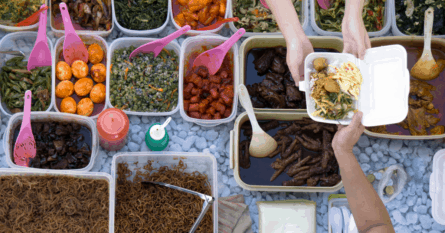We spoke to Mexico City-based food journalist and author Nicholas Gilman about Mexican food, its history, and its exciting future.
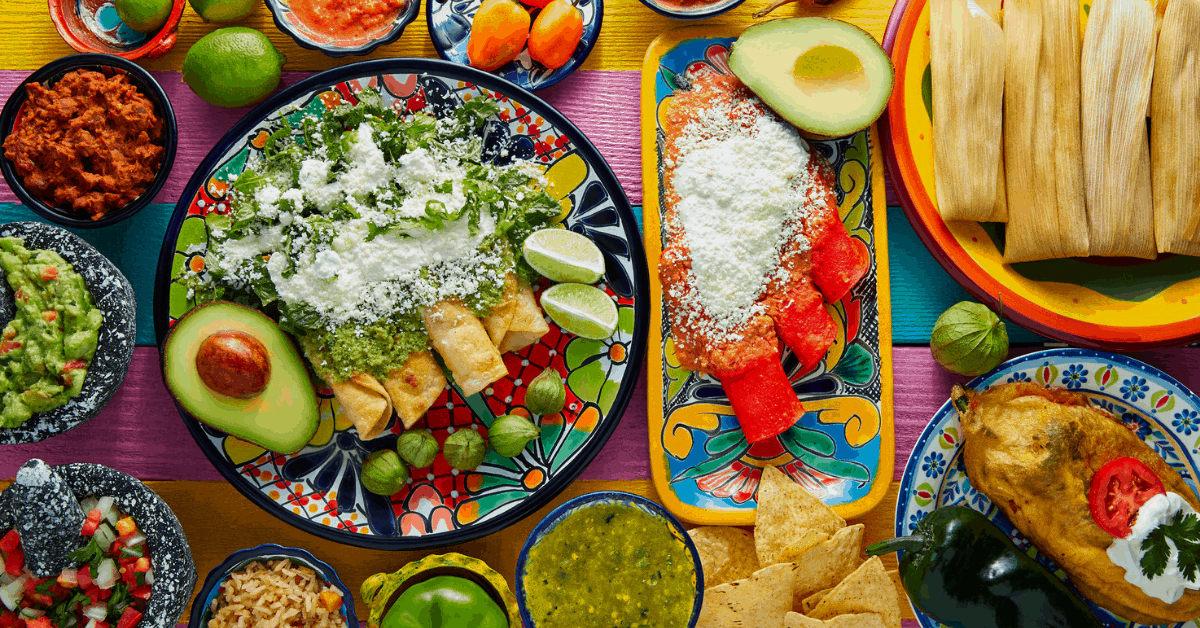
The taste of zesty lime, earthy maize, and hearty frijoles. The smell of hot tortillas fresh off the griddle combined with spicy chilies, rich mole sauces, unbelievably tangy tomatoes, and the seemingly endless supply of perfectly ripe avocado. Mexican food is a riot of flavor, and there is no better place for a food-based city break than the nation’s capital, Mexico City.
Food journalist and author Nicholas Gilman knows this better than anyone. He’s been passionately eating his way around the city for some years now, and recording his gastronomical adventures through his popular blog Good Food Mexico. He is an advocate for Mexican cuisine and is a founding member of the Mexican chapter of Slow Food International, a society dedicated to conserving local food culture.
According to Gilman, Mexico City, as the country’s economic and cultural center, has become a gastronomical melting pot, and is an excellent place to sample the true breadth of Mexican cuisine. The diverse topography of Mexico, which includes mountain ranges, active volcanoes, deserts, tropical jungles, canyons, and highlands, is home to a number of unique indigenous cultures, each with their own unique food traditions and history.
“Mexico City is the center of [Mexico’s] power and culture; a microcosm of the myriad of traditions is found here and can be collected and studied.” He said.
For Gilman, Mexican food gets a bad rap internationally, and most don’t realize the complexity of flavor and elaborate processes of preparation that go into making traditional Mexican dishes.
“Like many world cuisines, Mexico’s is poorly and unfairly represented outside of its homeland,” he said.
“Within the country itself, one can find a huge variety of regional dishes made from traditional ingredients – maize, beans, an enormous variety of chilies – and using cooking techniques such as soaking in lime, burning, and pit roasting only found here.”
And if you, like many, believe the age-old cliche that Mexican food is always spicy, then Gilman is ready to set the record straight.
“While chilies are used in sauces and eaten whole, preserved or fresh, it is a misconception that Mexican food is always ‘hot’,” he said.
“Flavors are often robust, but only sauces served as accompaniments tend to be spicy.”

If you stick to the well-touristed Centro district, and the upscale neighborhoods of Roma, Condesa, and Polanco, you can feel free to walk around explore the diverse range of cuisine on offer. It’s in these areas that Mexico City’s “Alta Cocina Mexicana”, the Mexican haute cuisine movement, is exploding, with restaurants such as Enrique Olvera’s Pujol (as featured in the Netflix series “Chef’s Table”) making a splash internationally.
These next-generation chefs are following the latest international cooking techniques and trends, but working with traditional Mexican products and ingredients to create dishes that appeal to modern diners, while still keeping the food traditions of their ancestors alive.
With so many mouth-watering dishes to sample in Mexico City, it’s essential to plan your three-square-meals a day carefully. Gilman shared his local knowledge with us to help build a well-rounded gastronomical itinerary for anyone considering a foodie break in the city.
Must-try traditional dishes in Mexico City
Many of Mexico City’s best eats can be found at the many street food vendors, markets, and small family-owned “fondas” (bistros) dotted throughout the city. Spend a few days hunting down Nicholas Gilman’s must-try traditional dishes in Mexico City, while enjoying the incredible architecture, bustling street activity, and fascinating history of some of the city’s most famous neighborhoods.
Tacos al pastor
“One of Mexico’s iconic dishes, the taco al pastor, is the product of the fusion of cuisines,” Gilman said.
“The story goes that Lebanese immigrants brought their shawarma, a Middle Eastern method of cooking seasoned lamb on an upright spit, serving them as “tacos árabes”. Lamb was first used in the tacos, but because pork is the preferred – and cheaper – meat in Mexico, it was substituted, and condiments (including chilies and pineapple) were added to suit local tastes.”
Where to find it: You can find tacos al pastor on almost every street corner, as it’s a fast, affordable, and convenient staple dish of the Mexican working class. Quality can vary widely, so we suggest heading to El Vilisto in Narvarte or El Huequito in Colonia Del Valle.
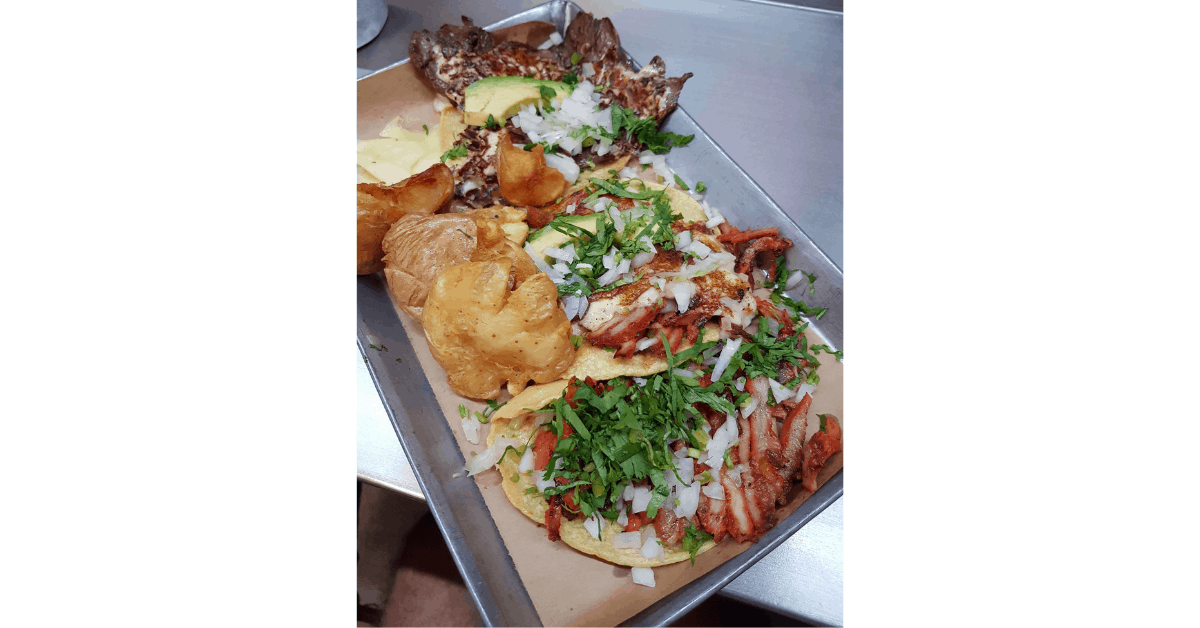
Tortas
“The torta, Mexico’s version of the sandwich, is the quintessential “comida capitalina” – fast food that is both European and truly Mexican,” Gilman said.
“According to legend, they were invented at the turn of the 20th-century by one Sr. Armando, an Italian immigrant, as his riff on the Italian panino, adapting it to available ingredients and the locals’ penchant for avocado and chili.”
Where to find it: You can find tortas, stuffed with an immense variety of ingredients, throughout Mexico City. Tortas Don Polo in Colonia Del Valle is an excellent spot to try a classic pork leg (pierna) or turkey (pavo) torta, however, one unmissable (and distinctly Mexican) variation is the torta de chilaquiles, which is best sampled at La Esquina del Chilaquil in Condesa.
At this super-popular street vendor you can enjoy true torta de chilaquiles — a long, soft bread roll, stuffed with “milanesa de pechuga” (breaded and fried chicken), salsa of your choice (verde is the most popular), queso fresco, frijoles, and “chilaquiles”, which are corn chips soaked in salsa until soft.
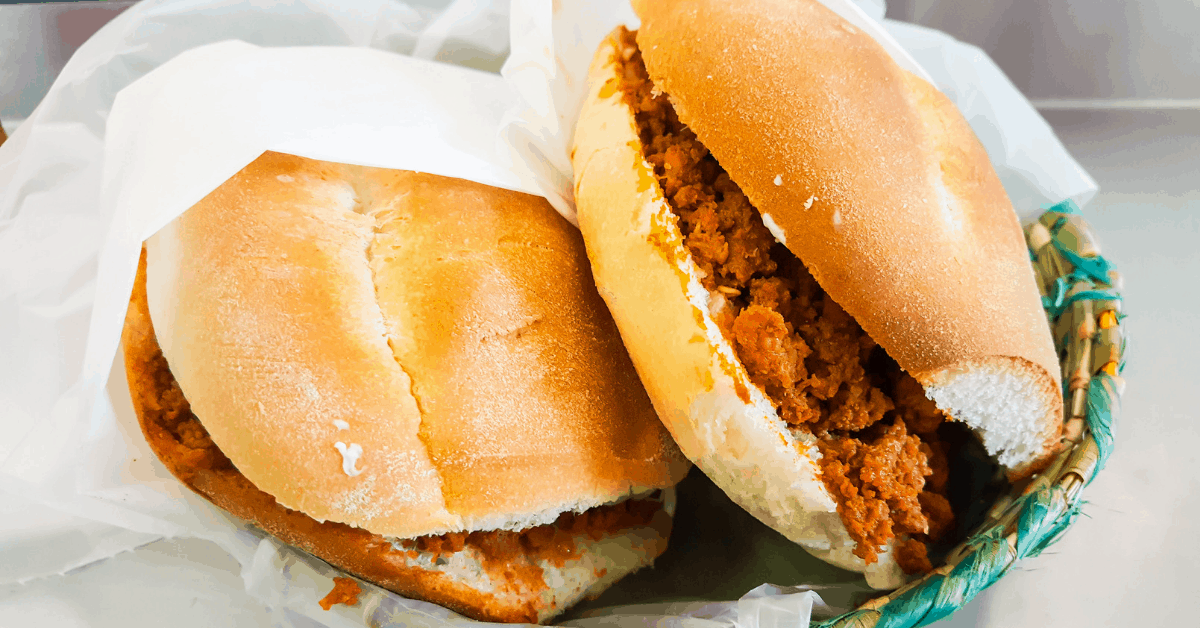
Pozole
“Pozole”, (pronounced poh-SOH–lay), is the quintessential Mexican comfort food and a soup fit for a king. Basically, it’s a hearty meat broth, laced with chili and augmented with hominy (known as “cacahuazintle” in Mexico),” Gilman said.
Where to find it: La Casa de Toño is the much-loved Mexican restaurant chain with cult status amongst locals, where you can order an excellent bowl of pozole at the many conveniently located outlets. For a Pozole deep dive, head to Pozole de Moctezuma in Centro, where you can sample a wide range of different styles and flavors.
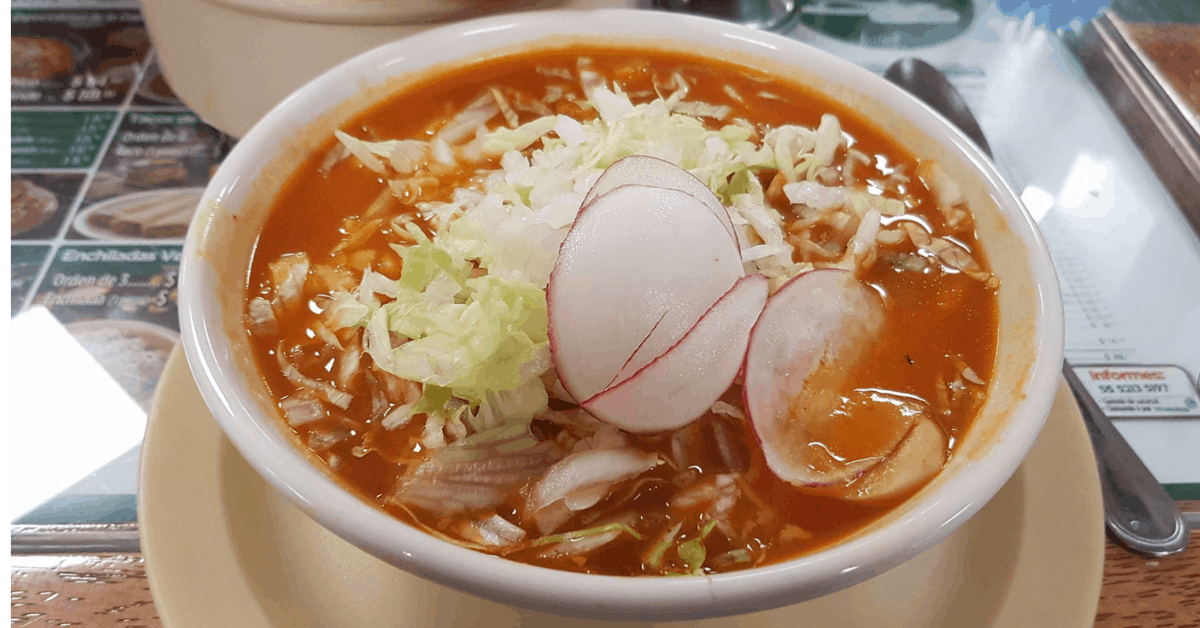
Carnitas
“Carnitas embody the flavor of roasted pork, down to its essence,” Gilman said.
“According to legend, the dish originated in the Michoacan area; but it is now found throughout the republic, often under the rubric “Carnitas Michoacanas”. Regardless, the preparation method varies little from region to region.
“The partitioned animal, including its viscera [organ meat], is first boiled in water perfumed with onion and garlic, then braised in its own fat, confit style, sometimes with orange and herbs, such as oregano. Finally, the meat is browned to add crispness and flavor.
“These proceedings take place in a giant copper tub, which distributes the heat evenly. Traditionally done outdoors over a wood fire, nowadays exquisite carnitas are prepared inside on gas. The chopped meat is served as tacos on corn tortillas garnished with cilantro, onion, and salsa.”
Where to find it: Head to Rincón Tarasco in Escandon to sample the city’s best. Otherwise, Tacos Don Juan in Condesa also serves up excellent carnitas, and If you’re lucky, they will also have tacos de “azteca” on the menu – a combination of grilled “nopal” (cactus) and cheese.

Mole
“’Mas Mexicano que mole’, (he’s more Mexican than mole) goes the saying, and no food better represents the spirit of Mexico than this famous dark, rich and spicy sauce,” Gilman said.
“’Isn’t that the one made with chocolate?’, people often ask when the subject turns to mole, (pronounced “MOH-lay”) but chocolate is the least of it.
“While some of the best-known moles do indeed include chocolate amongst their many ingredients (the dark ones of Puebla and Oaxaca for example), many do not; there are also green, red, yellow and even white moles. The commonality is that they are almost always thickened with seeds or nuts.”
Where to find it: If you’re a fan of “Chefs Table”, then chances are you’ve already made a reservation at Pujol to sample Enrique Olvera’s famous mole madre. Otherwise, head down to bustling local favorite La Poblanita in San Miguel de Chapultepec.
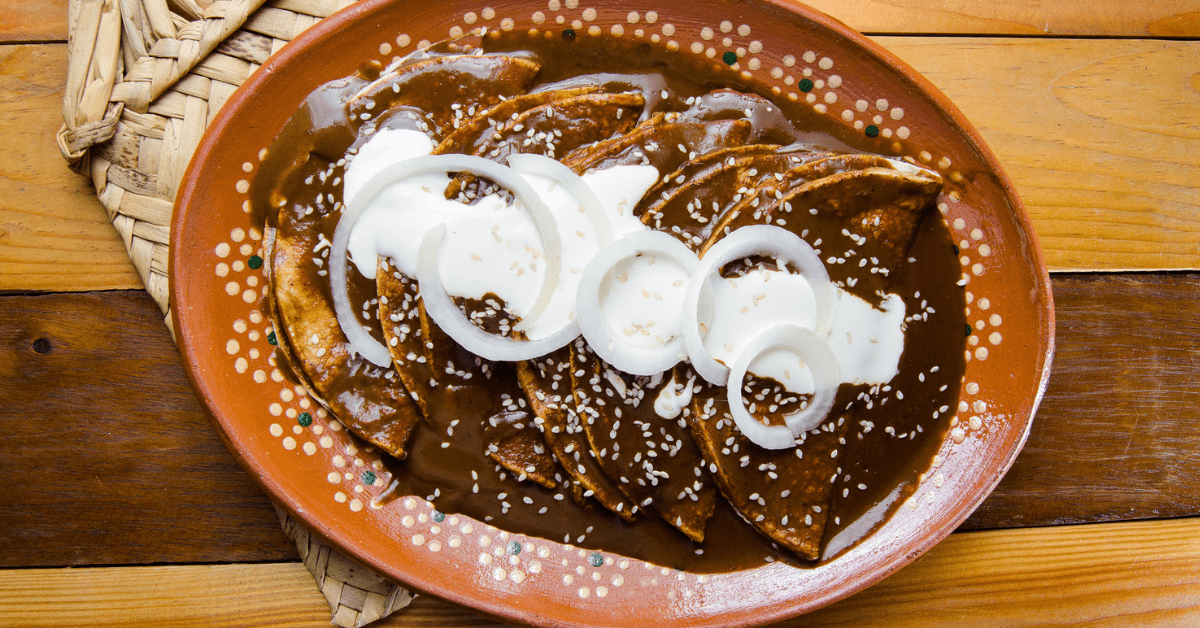
Mexico City’s best modern restaurants
While breakfast and lunch are best spent hunting down street eats and sampling dishes at local fondas, evenings are best spent at one of Mexico City’s many up and coming Alta Cocina Mexicana restaurants. Here are a few of Gilman’s favorite places to eat in Mexico City, for those who wish to explore the next generation’s take on traditional Mexican fare.
Fonda Fina
Put an evening aside to dine at Fonda Fina, located in the heart of Roma Norte, and you’ll experience Alta Cocina Mexicana at its best. Head chef Jorge Vallejo utilizes both exotic and well-known Mexican ingredients to create classic homestyle dishes with an experimental edge.
Their seasonal menus are always packed with delicious and exciting dishes, such as roasted bone marrow with pork cheek and masa, or tostadas topped with fresh tuna or fish loin, carefully dressed with locally-sourced herbs, seeds, and delicious homemade salsas.
Pasillo de Humo
The Mexican state of Oaxaca is considered by many to be Mexico’s food Mecca and is the birthplace of many of the nation’s most celebrated dishes. At Pasillo de Humo in Condesa, you can sample a number of Oaxacan specialties, prepared with a contemporary twist by chef Alam Méndez.
Be sure to order the “tlayudas”, a dish made by folding a large, thin, crunchy toasted tortilla over meat, pork fat, and frijoles, and sample a few different varieties of “tamale”, a popular Mexican snack where masa (corn meal) and various other tasty fillings are wrapped in a corn husk and steamed.

Carmela y Sal
The southeastern state of Tabasco on Mexico’s Yucatan peninsula has a more tropical climate than the rest of the country, and a unique cuisine that incorporates fruits, coconut, and cassava. Sample Chef Gabriela Ruiz’s youthful take on classic Yucatecan cuisine at Carmela Y Sal, which is located in Mexico City’s upscale Polanco neighborhood.
Try the Yucatecan classic, which is ceviche drenched in coconut milk and habanero. Or order a plate of artisanal Tabasco-style cheese, freshly smoked, served with honey and charred peppers. Wash it all down with a tarragon cocktail, which blends mezcal (an earthy liquor made from agave), with grilled pineapple, and absinthe.
Nico’s
If you’re looking for an upscale yet unpretentious spot for a traditional Mexican meal, then book a table at Nico’s, located northeast of the Centro in the neighborhood of Claveria. The chefs here are dedicated to preserving the Mexican food of yesteryear and serve a number of unusual dishes and ingredients which are otherwise difficult to find.
The most intriguing offering on their current menu might be the “Conejo en pasilla y pulque”. This rabbit dish is prepared with pasilla chiles and “pulque”, a traditional home-fermented liquor with a strangely viscous texture. The rabbits are raised by local indigenous communities.

